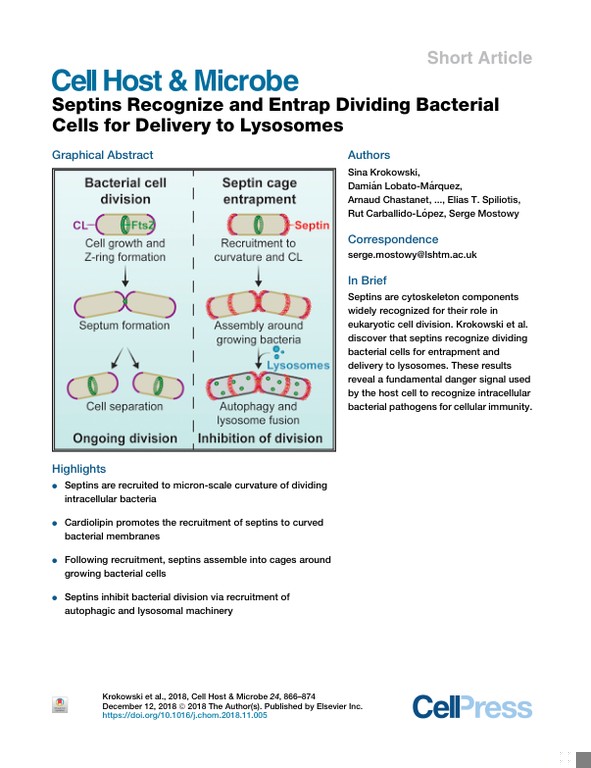Septins recognize and entrap dividing bacterial cells for delivery to lysosomes
Technologies: NanoJ-VirusMapper
Published in Cell host & microbe, January 2018
Publisher: Elsevier

The manuscript published in Cell Host & Microbe in 2018 by Krokowski et al. explores the role of septins in recognizing and entrapping dividing bacterial cells for delivery to lysosomes during Shigella flexneri infection. Septins, cytoskeleton components, bind cardiolipin, a curvature-specific phospholipid in bacterial membranes, leading to their recruitment to highly curved bacterial membranes. Once recruited, septins assemble into cage-like structures around growing bacterial cells, inhibiting bacterial division via recruitment of autophagic and lysosomal machinery. The study employed various methods, including bacterial growth, plasmid construction, cardiolipin detection using MALDI-TOF MS, protein-lipid overlay assays, liposome flotation assays, and septin recruitment to supported lipid bilayer microspheres. The findings shed light on a fundamental danger signal used by the host cell to recognize intracellular bacterial pathogens for cellular immunity and have implications for understanding the mechanisms of cellular immunity and for potential therapeutic applications.